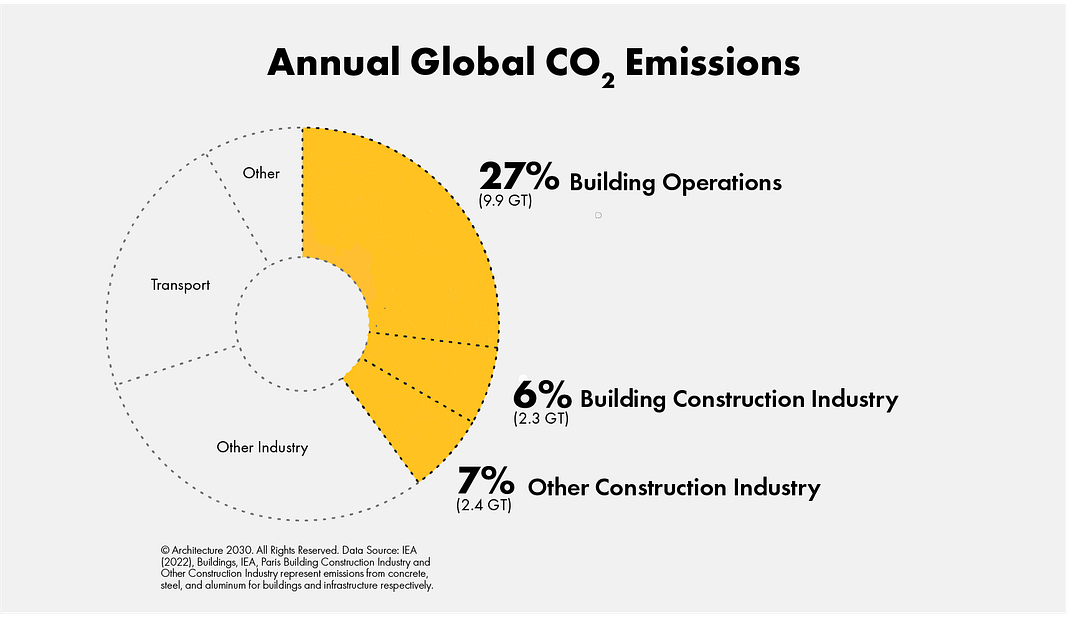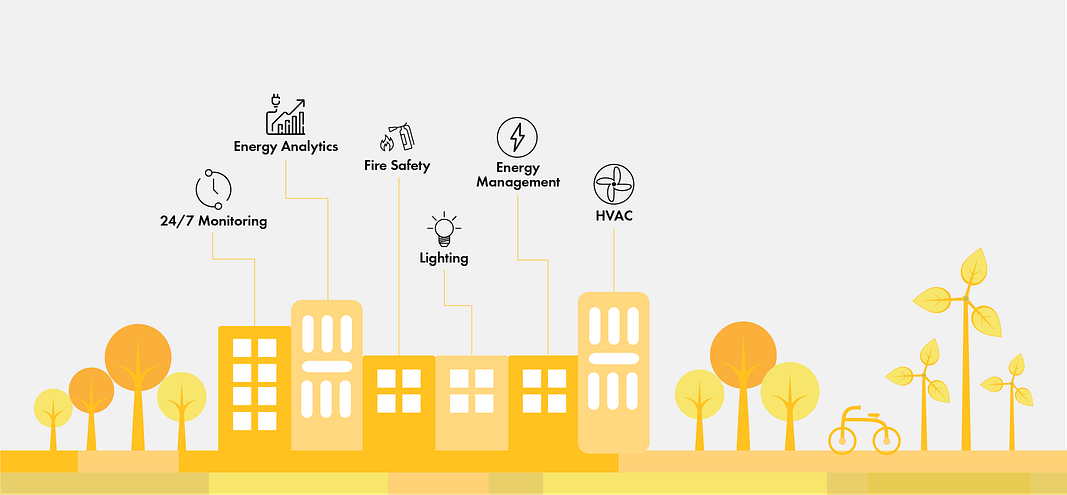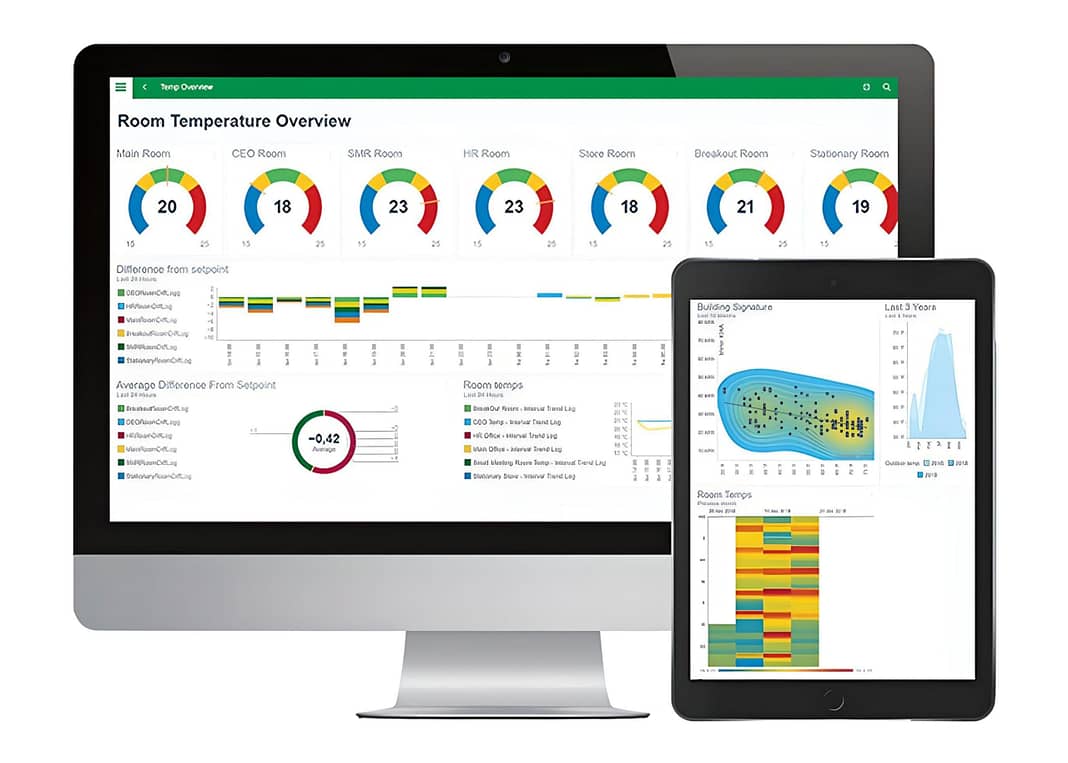By Rob Atkinson & Greg Parker
Background
That the built environment generates 40% of annual global CO2 emissions is understood, but how that percentage breaks down is probably less widely known. Operational energy, the energy used in lighting, heating, cooling, and building equipment, accounts for 27%, while building construction and infrastructure materials (referred to as embodied carbon) make up the additional 13%.
Given these numbers, a focus on operational energy is clearly called for, and it makes sense for companies, landlords, and operators to invest in building energy efficiencies that will not only reduce carbon emissions but cut operational costs.
By 2040 approximately two thirds of global building stock will be structures that exist today. Without widespread decarbonization of those buildings, we cannot achieve the 1.5°C Paris Agreement target. Building operators will have to accelerate energy efficiency upgrades in addition to replacing on-site fossil fuels with 100% renewable energy. A huge challenge, but an invaluable yet underutilized tool can make a huge difference to that effort.
BMS Defined
Building management systems (BMS) are control systems designed to help facilities managers effectively operate building mechanical, electrical, and plumbing systems, and identify and correct problems. A well-designed BMS will include monitoring functions that visibly reflect space temperatures, occupancies, and the operation of pumps, fans, and other energy consuming equipment.
Control systems that require an efficient BMS
From this perspective a BMS is a powerful tool for monitoring energy use and identifying patterns as well as adjusting systems to maximize building efficiency. A BMS can identify the location of peak energy use and allow for modifications that tailor the building’s energy usage. Ensuring building services provide the right amount of heating and cooling for occupancy fluctuations can affect a significant cost savings for building owners and occupants.
With many companies now considering new leasing agreements, a factor in their decision making will be the impact of remote work on the size of the workplace they require and the number of people it serves. The data an efficient BMS provides based on actual facility use is invaluable in planning a hybrid policy around changing operational needs and accommodating future expansion.
BMS Power
Many building management systems are designed by engineers for engineers to interpret and make adjustments. But facility management teams don’t usually have the same skills as engineers, which means they cannot make the best use of BMS technology and its potential. However, that problem is easily solved if the system has an intuitive, easy-to-use interface that doesn’t require a technician to retrieve and interpret the data. Energy usage and trend analyses must be relevant and easily identified. As a plus, that information clearly conveyed to a wide range of interested parties will drive a higher level of engagement and support for defined initiatives.
A significant factor is the number of monitoring and control points. Since a building’s use may change considerably over its lifespan based on unknown social or economic factors, a BMS should be flexible to manage uncertainty. Whether housing a single tenant or multi-tenants or even a change of use, a sufficient number of control points are essential to cover monitoring for meaningful analysis and adjustments without overwhelming users.
Positive Results
Once configured with a focus on usability, a BMS can help building managers and their teams dramatically impact a facility’s sustainable credentials and reduce energy consumption through management of cooling, heating, lighting, ventilation, and identification of underutilized building areas. Most BMS have this functionality built in through data collected on the operation of cooling units and project information requirements, but that data is seldom converted to usable trends assessed by workplace teams to play a major role in operational planning. For future planning, trends can indicate the size of the real estate, scope of the facility required, and key factors for tenants in lease negotiations.
Most of us have experienced a heating and cooling system out of sync with the changeability of outside air temperatures. Unseasonable weather that does not reflect predicted temperature settings will be an increasing consequence of global warming. By managing temperature and air quality through real time adjustments based on occupancies, external conditions, and internal temperatures, a BMS can improve a building’s environment for users, ensuring optimal conditions for the least energy use.
Renewable energy integration
An effective BMS will also support the integration of renewable energy technologies with other building systems, allowing all systems to work harmoniously and maximise the benefit of lower carbon energy use. Solar panels, wind turbines, and heat pumps can all be integrated into a BMS, contributing to the goal of 100% renewable energy.
Conclusion
It is not uncommon to find a fully capable BMS underutilised due to lack of understanding. In general, a disconnect between system designers and system users has become normal practice resulting in the significant underuse of available tools. Improving the effectiveness of a BMS to develop a more sustainable building can realize a rapid return on investment. On top of that, the success of sustainability initiatives can be readily measured and easily converted into carbon and cost improvements while achieving lower operating expenses for building use. All of these advantages are easily had when a BMS is well configured and intuitive, its power understood and skillfully used to benefit building owners, managers, tenants, and the planet.
Rob Atkinson | Senior Project Manager
With over 25 years of design experience, over 15 of which have been in leadership roles, Rob Atkinson simultaneously occupies the roles of Lead Designer, Senior Project Manager and Sustainability Consultant across a broad range of industry sectors. These include a specific focus on workplace, financial, infrastructure, and life sciences projects. He collaborates with senior stakeholders and leads creative and technical teams globally across Europe, the Middle East, and Africa.
Greg Parker | Founder and Managing Director of YES Engineering Group Limited
With over 25 years of design experience, over 15 of which have been in leadership roles, Rob Atkinson simultaneously occupies the roles of Lead Designer, Senior Project Manager and Sustainability Consultant across a broad range of industry sectors. These include a specific focus on workplace, financial, infrastructure, and life sciences projects. He collaborates with senior stakeholders and leads creative and technical teams globally across Europe, the Middle East, and Africa.







